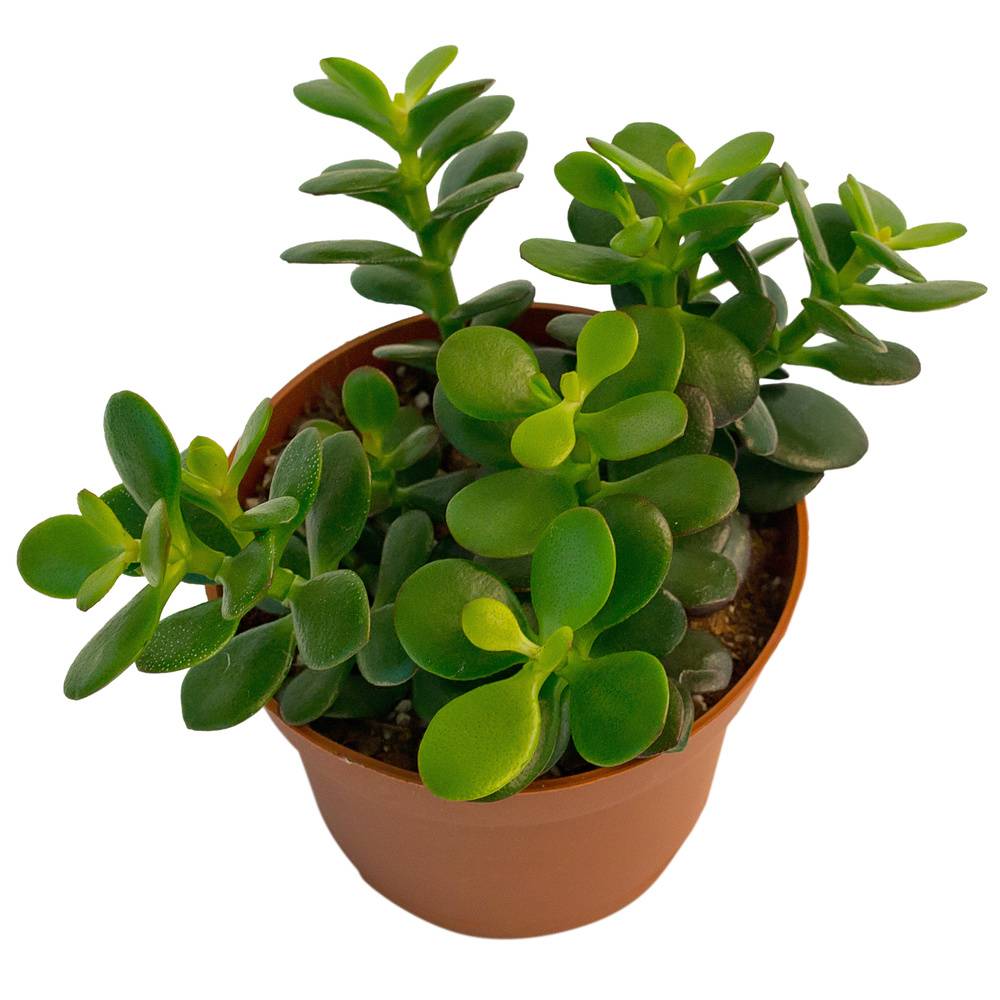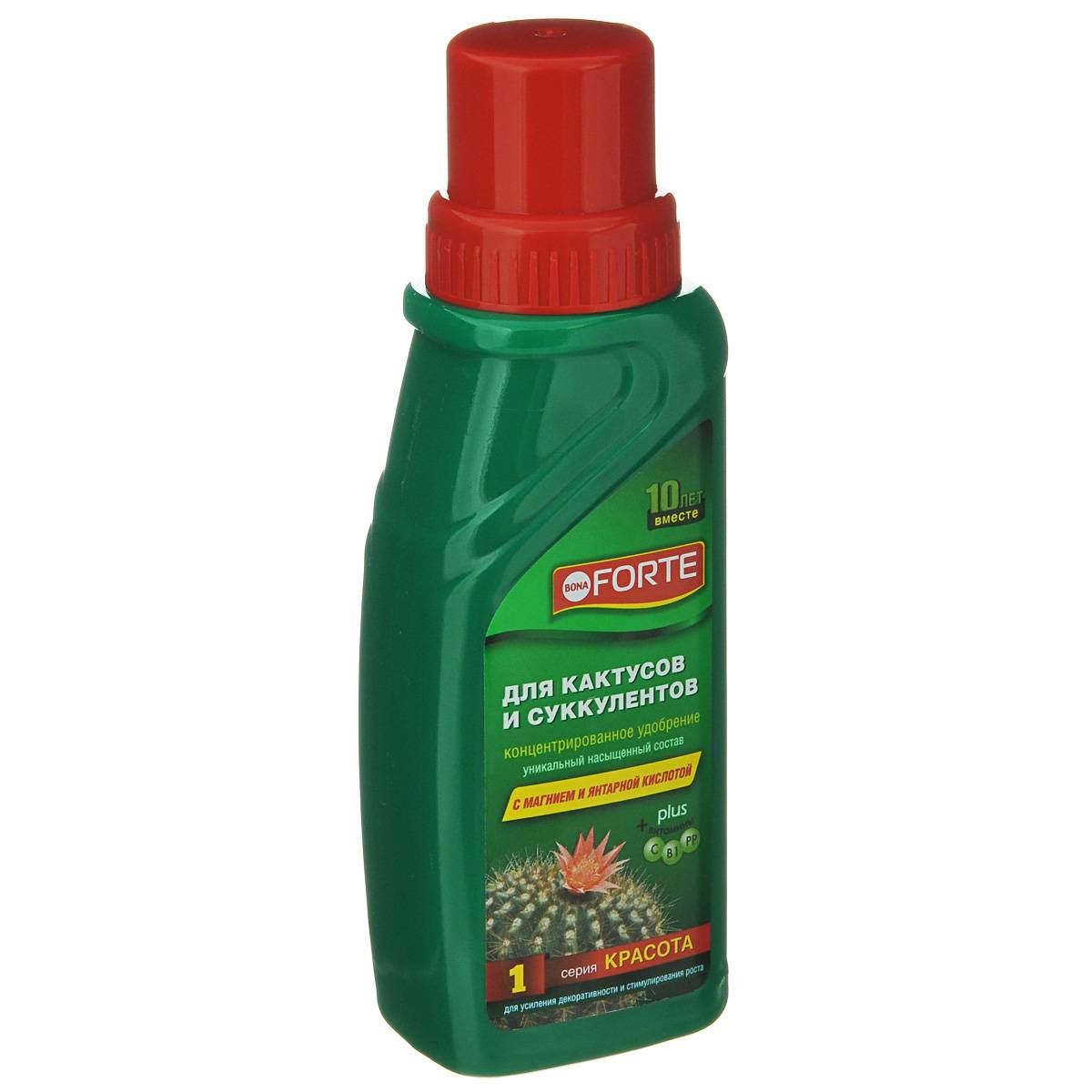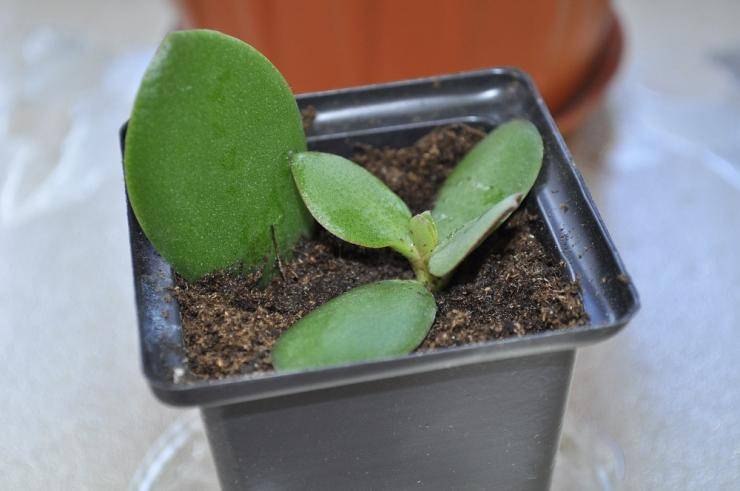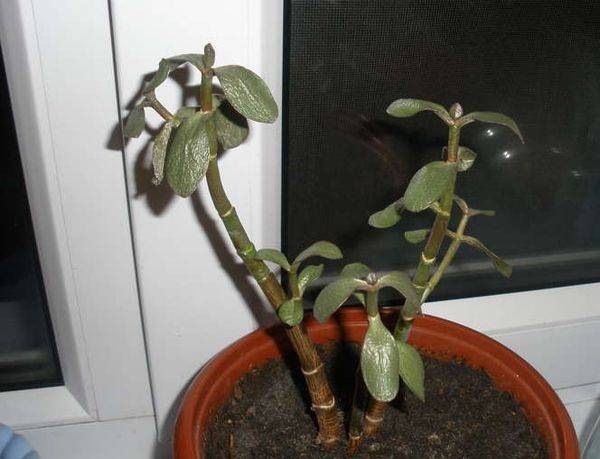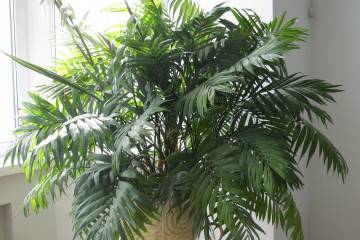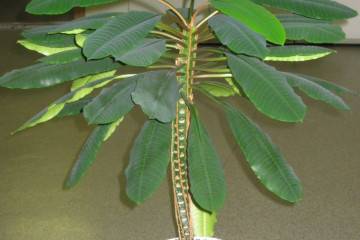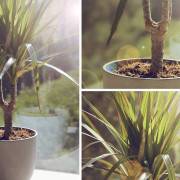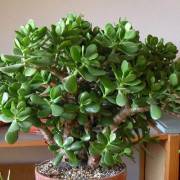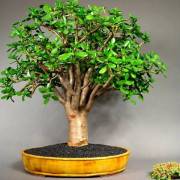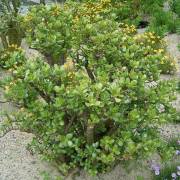Crassula Ovata Crassula ovata - what kind of flower
Content:
Crassula Ovata is familiar to everyone as a money tree, although it has many more names. In official sources, she is referred to as an oval or ovoid bastard. In the people, this plant is called the tree of luck or the tree of love, attributing magical properties to it. In addition, the flower has a beneficial effect on humans, releasing biologically active substances and improving air quality.
Crassula Ovata
Crassula Ovata (Latin Crassula ovata) is the most popular home-grown Crassula variety. Everyone loves her due to her appearance, unpretentious care, as well as shade tolerance.
The plant is characterized by high growth rates. The wide, branched crown is formed by many thickened shoots, on which fleshy leaves are located. They can be oval or egg-shaped.
The young trunk and shoots are predominantly gray-green in color. With age, they overgrow with a crust and change color to brown. The fleshy leaves have a glossy finish. Grows green or gray-green. The length of the leaf plate is about 3.5-4 cm. The leaves grow opposite each other, tending upward.
Popular Crassula varieties
Crassula is a flower that has many varieties, also characterized by unpretentious care.
- Crassula is oval, or variegated. Its leaf plates differ in width and the presence of white stripes. The trunk is predominantly white-green or green with white stripes. However, it also turns brown with age.
- Crassula of the form of a medio-variegat. It features bright yellow stripes located in the central part of the leaf plate. Some of the greens are devoid of chlorophyll, and therefore have a pale color.
- Crassula Hummel's Sunset. Under low light conditions, it is almost the same as the oval bastard, however, in the case of sufficient light and heat, its leaves acquire a rich pink color. The shoots themselves and the trunk become cherry-colored.
- Crassula Minor. Differs in small size and glossy pointed leaves. With proper care, reddening of the leaves and trunk is also observed.
- Crassula The Hobbit. A hybrid form of the bastard, distinguished by its leaves. They seem to be turned outward, but at the same time they are fused at the base.
Crassula Ovata care
Despite its unpretentiousness, home care for Ovat Crassula must meet a number of requirements.
Illumination and temperature conditions
Crassula Ovata, Tricolor and its other varieties are light-loving plants. Growing them in the house should be close to natural conditions. Therefore, the best place for a flower is a well-lit windowsill. Its location is desirable on the west or south side.
If the sun's rays are not enough for a plant of the Crassula type, its tops begin to actively grow. Thus, the flower loses its decorative appearance, and the shoots themselves risk breaking off.
The optimal temperature conditions for a crassula flower are from 20 ° C to 25 ° C.In winter, the temperature should be in the range of 6-10 ° C.
Watering rules and humidity
Since Crassula is a succulent, it easily tolerates drought. The special axils of the leaves contain moisture, which helps in the absence of watering. But excessive moisture for a plant is dangerous by decay of the trunk and root system. Watering should be carried out only after the topsoil dries well. In winter, the frequency of watering is reduced to once a month.
Succulent Crassula can easily tolerate dry air, so it does not need spraying. To remove settled dust or other dirt from the leaves, it is enough to periodically wipe them with a damp cloth.
Top dressing and soil quality
You can fertilize Crassula Konvolyuta, Horntree and its other subspecies using formulations intended for cacti. The main thing is that the fertilizer contains a small amount of nitrogen. From spring to autumn, it is enough to apply top dressing, according to the instructions, every 3-4 weeks. They are not needed in winter.
As for the soil, when planting a houseplant, a composition of:
- peat;
- turf land;
- sand;
- leafy land;
- humus.
Features of plant transplant
Because of the small root system for the Crassula Arborescens money tree and many other varieties, a shallow but wide pot of heavy material is chosen. There must be drainage holes and a layer of gravel at the bottom.
The transplant procedure can be carried out annually for young plants and once every 3 years for adult Crassulae. Step-by-step instruction:
- The drainage layer is poured into the pot by 1/3 part.
- A small layer of earth is laid out.
- A plant is placed in a pot, its root system is gently straightened.
- It is filled with the required amount of soil.
- Watering is carried out to settle the soil.
How and when it blooms
Blooming crassula is an extremely rare phenomenon and is usually observed in natural conditions. Seeing Crassula flowers at home is possible with proper care and optimal conditions. Flowering usually occurs at the age of 5-7 years.
Reproduction of the oval fat woman
The simplest method of propagation of the Ovat and the lymphoid is propagation by cuttings. For this purpose, a young shoot with several adult leaves is cut with a sharp blade. You can cut off large leaves, they also root well. Then the cuttings are left to dry a little for 2-3 hours, after which the cut is treated with activated carbon or a special growth stimulant. The prepared cutting is planted in a separate container.
Possible problems in growing Ovata
Fatty Ovata, Milky (Crassula Lactea) and other varieties are rarely affected by pests. However, it is worth knowing about them.
- Mealybug. On the rim of the leaf plate, tubercles are found, which eventually turn into sticky spots. In the fight against the pest, treatment of the affected leaves with a swab dipped in an alcoholic infusion will help.
- Shield. In case of infection with this pest, brown tubercles are observed on the leaves. And when they are removed, a discolored sheet plate is visible. In the fight against the scabbard, it is advisable to use a soap or alcohol solution, as well as insecticides.
- Spider mite. You can find a tick by small dots on the leaves. In the absence of measures taken, the leaf plates dry out quickly and fall off. For the treatment of plants, a soap solution is used, as well as preparations of Apollo, Fitoverm, etc.
Other possible problems:
- falling leaves;
- drying of sheet plates;
- yellowing of the plant.
They arise as a result of improper care: excessive watering, excess sunlight, low temperatures, etc.
Crassula Ovata is the best option for novice florists and just lovers of indoor plants.
This flower is easy to care for, moreover, its attractive appearance allows you to make mix compositions from house plants, which will become a real decoration of the house.
